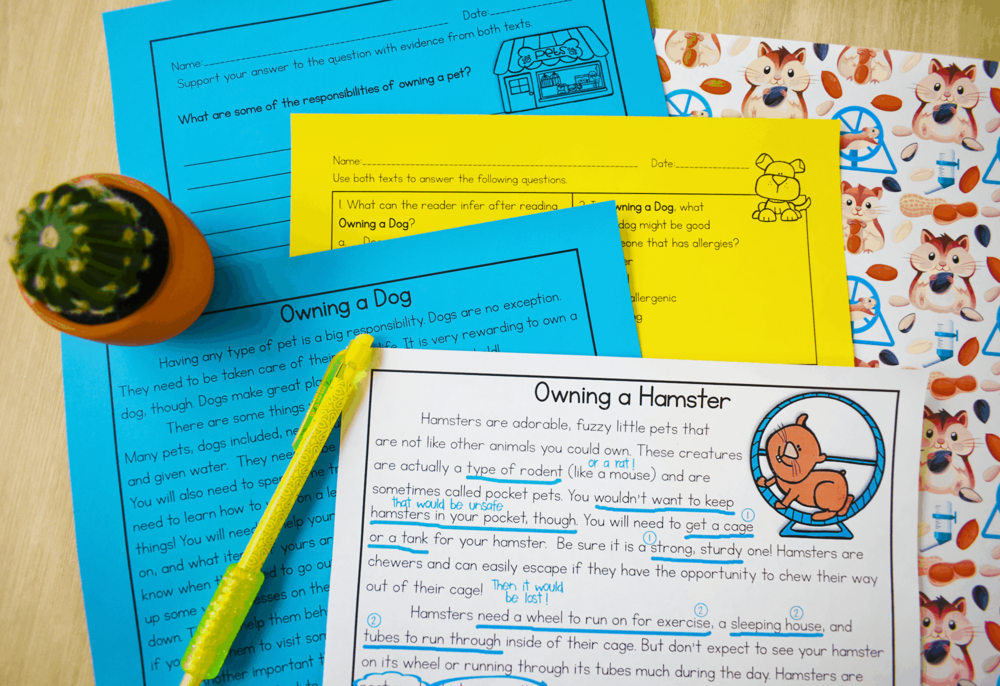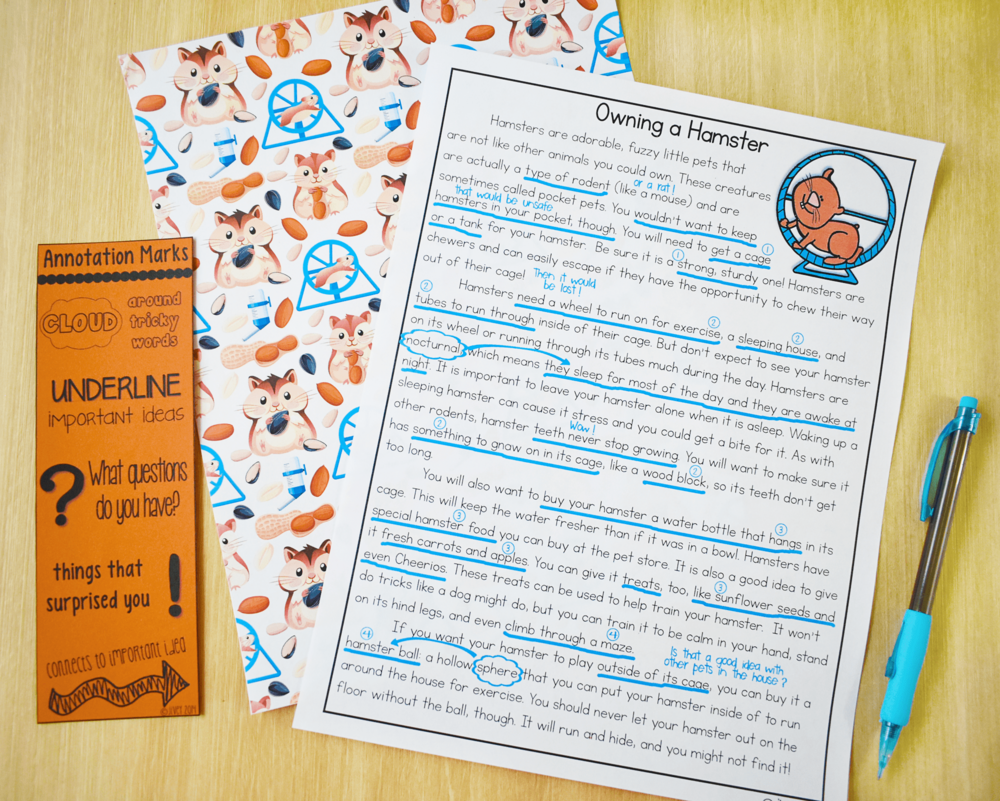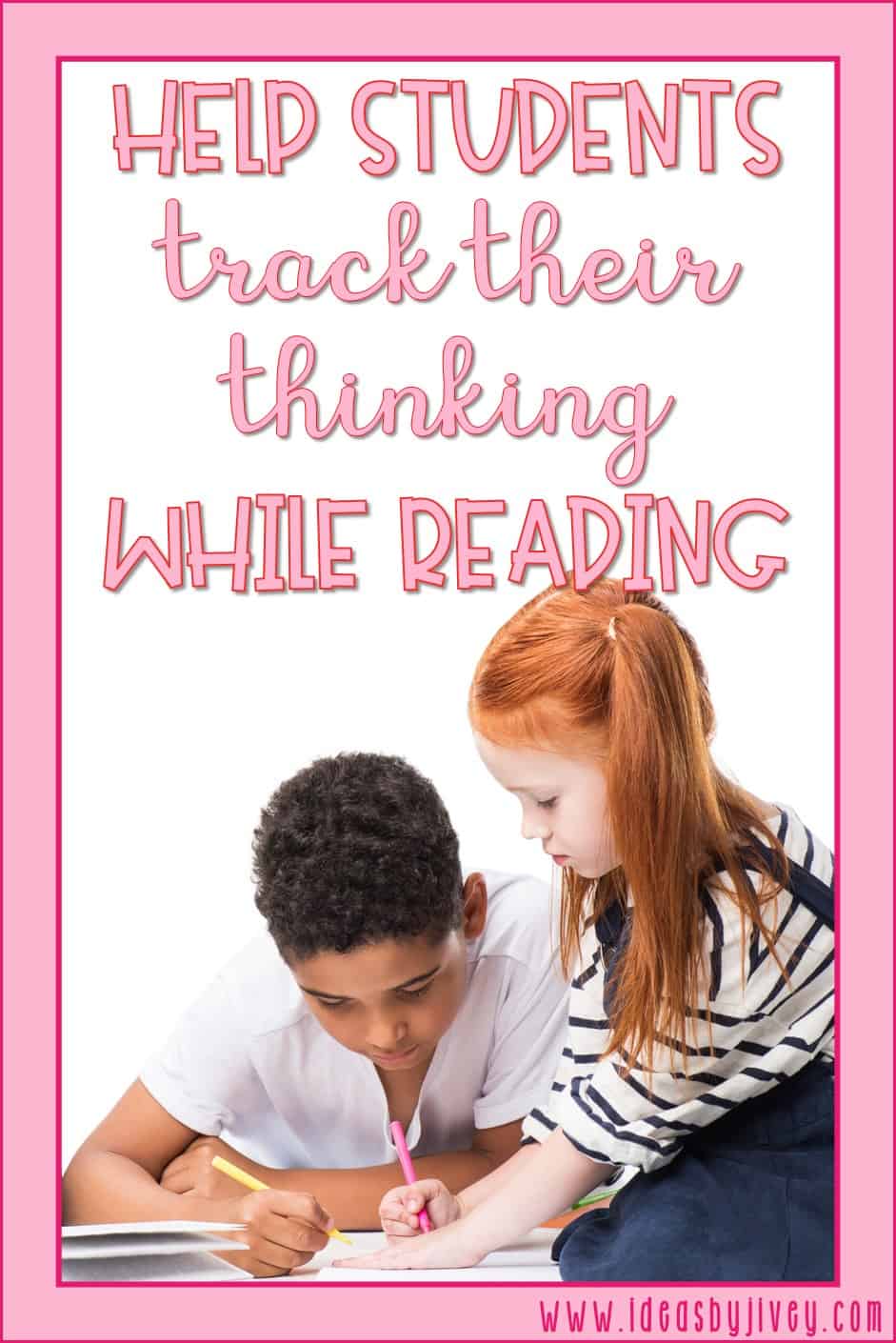Menu
Annotation in the lower grades will look a bit different than it does in the upper grades. It definitely won’t be quite as detailed, but that doesn’t mean it isn’t as important!

During close reading, students should annotate the text to help leave tracks of their thinking as well as to help with their purpose for reading. How you have students annotate (the marks they will make) is totally up to you, but making sure their marks are purposeful is what is most important to teach them.
1) With a text-dependent question (TDQ)… This will help provide a student a purpose for each reading. We don’t want the margins to be full of random thoughts, but rather responses to their reading based on their purpose.
2) With a cold read… Students use an annotation bookmark at first to help remind them of the things they should be thinking about while reading, but they soon don’t need it because they remember.
It’s a good idea to have students close read and annotate one paragraph at a time. You might have them cover the other paragraphs in the passage with blank paper to “block” where they are looking.
The best way to teach students how to think and annotate is to model it for them. In fact, for the first several weeks, I would do it all together as a shared interactive writing activity so students aren’t overwhelmed.
Below, I have modeled my own thinking for students with a passage I wrote about owning a hamster (which you can download and use with your own class in this paired text freebie).

I showed the tracks of my thinking with:
… but mostly, I underlined the key ideas that answer the TDQ and numbered them by category:
I would not annotate ahead of time. Work together as a class to think more deeply. Having in-depth conversations with students about each paragraph can help lead to new thinking for the students, which is exactly what we want from our readers!
Good luck annotating in your own classroom! If you are interested in even more paired texts, check them out here in my store!
